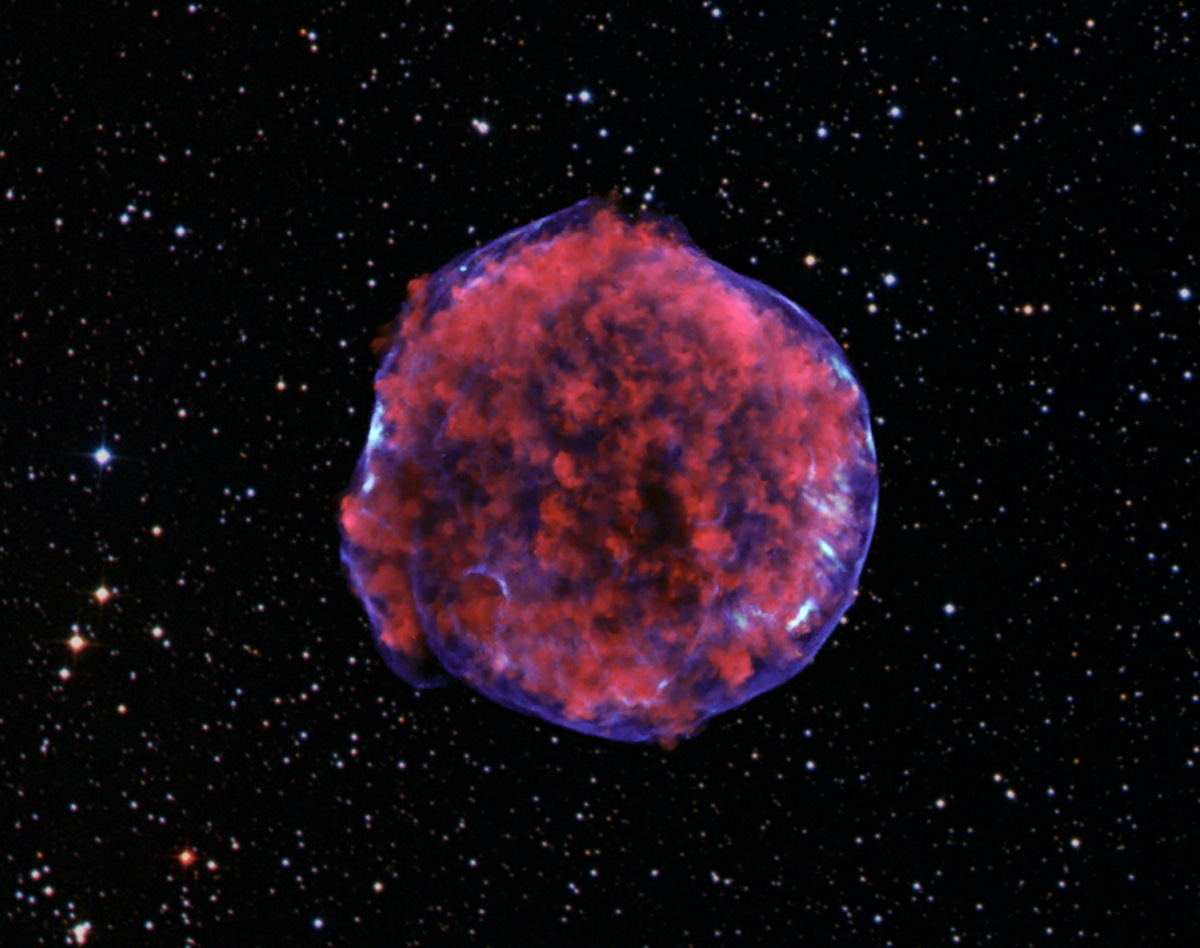
Star explosions may have played a greater role in Earth's climate history than scientists thought.
Nearby supernovas have left a series of possible fingerprints in the tree-ring record here on Earth over the past 40,000 years, potentially disrupting our planet's climate multiple times over this span, a new study reports.
"These are extreme events, and their potential effects seem to match tree-ring records," study author Robert Brakenridge, a senior research associate at the Institute of Arctic and Alpine Research at the University of Colorado Boulder, said in a statement.
Supernova photos: Great images of star explosions
Brakenridge compiled a list of 18 supernovas — violent explosions that mark the deaths of certain kinds of stars — that occurred within about 4,900 light-years of Earth. He then compared the estimated timing of these cosmic events with spikes in carbon-14, as observed in the tree-ring record.
Carbon-14 is a radioactive isotope of carbon that contains eight neutrons in its atomic nucleus instead of the usual six. Carbon-14 is rare on Earth, and it doesn't occur here naturally without some outside influence — namely, high-energy radiation streaming in from deep space, which can convert some of the "normal" carbon in our atmosphere to carbon-14 (which explains why this isotope is also known as radiocarbon).
"There’s generally a steady amount year after year," Brakenridge said. "Trees pick up carbon dioxide, and some of that carbon will be radiocarbon."
Get the Space.com Newsletter
Breaking space news, the latest updates on rocket launches, skywatching events and more!
The amount of radiocarbon is not always steady, however. Scientists have spotted spikes in the tree-ring record, which have generally been attributed to powerful flares from our own sun. But Brakenridge suspected that supernovas could be involved, so he investigated a possible link.
And he found a tantalizing but tentative one: Eight of the closest supernovas on his list occurred around the same time as a brief radiocarbon spike. The association was especially strong for four supernovas, including one 13,000 years ago that ended the life of a star in the Vela constellation about 815 light-years from Earth.
Shortly after that explosion, radiocarbon levels shot up briefly by about 3% in Earth's atmosphere, Brakenridge found.
The results are not conclusive, given the various uncertainties involved. For example, it's difficult to date supernovas precisely; the inferred timing of the Vela explosion may be off by as much as 1,500 years, Brakenridge said. But he thinks that the new results, which were published online last week in the International Journal of Astrobiology, show that more research into a supernova-radiocarbon link is warranted.
“What keeps me going is when I look at the terrestrial record and I say, 'My God, the predicted and modeled effects do appear to be there," Brakenridge said.
He's not the only scientist to suggest that supernovas may have significantly affected life on Earth. Other studies have postulated that nearby star explosions have caused or contributed to some mass extinctions, by altering our planet's atmosphere and causing climatic shifts.
Mike Wall is the author of "Out There" (Grand Central Publishing, 2018; illustrated by Karl Tate), a book about the search for alien life. Follow him on Twitter @michaeldwall. Follow us on Twitter @Spacedotcom or Facebook.
Join our Space Forums to keep talking space on the latest missions, night sky and more! And if you have a news tip, correction or comment, let us know at: community@space.com.

Michael Wall is a Senior Space Writer with Space.com and joined the team in 2010. He primarily covers exoplanets, spaceflight and military space, but has been known to dabble in the space art beat. His book about the search for alien life, "Out There," was published on Nov. 13, 2018. Before becoming a science writer, Michael worked as a herpetologist and wildlife biologist. He has a Ph.D. in evolutionary biology from the University of Sydney, Australia, a bachelor's degree from the University of Arizona, and a graduate certificate in science writing from the University of California, Santa Cruz. To find out what his latest project is, you can follow Michael on Twitter.
-
rod The article wraps up with "The results are not conclusive, given the various uncertainties involved. For example, it's difficult to date supernovas precisely; the inferred timing of the Vela explosion may be off by as much as 1,500 years, Brakenridge said. But he thinks that the new results, which were published online last week in the International Journal of Astrobiology, show that more research into a supernova-radiocarbon link is warranted.Reply
“What keeps me going is when I look at the terrestrial record and I say, 'My God, the predicted and modeled effects do appear to be there," Brakenridge said.
He's not the only scientist to suggest that supernovas may have significantly affected life on Earth. Other studies have postulated that nearby star explosions have caused or contributed to some mass extinctions, by altering our planet's atmosphere and causing climatic shifts."
My observation. The c-14 dating method may or may not be impacted by supernovae too. -
Helio I'm curious about the basic science to bump carbon up by two neutrons. So is it that supernovae have the better neutron energies more suitable for capture than ones from the Sun? What sort of flux density would Earth get from 4900 lyrs, or even the 815 lyr Vela SN? Are they great enough to make a 3% uptick from C12 to C14? Perhaps.Reply









